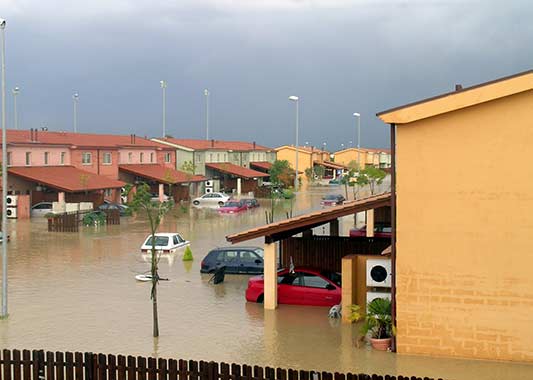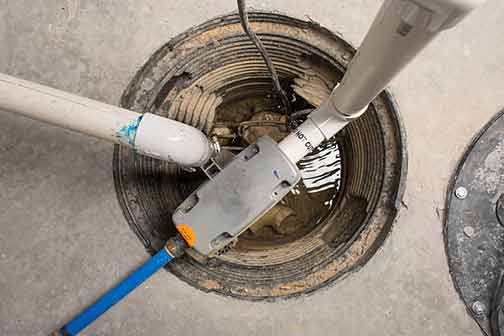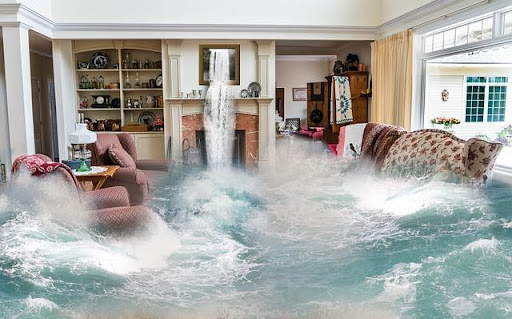
When fortifying your residence against potential water damage, installing flood control systems in home settings emerges as a paramount safeguarding solution. In the face of an increasingly unpredictable climate, the significance of this cannot be overstated. So, let’s get into the essential aspects of the process, offering valuable insights to help you protect your property!
Understanding flood risks
Understanding flood risks is crucial for installing flood control systems in home settings. Flooding can occur due to various factors, such as heavy rainfall, overflowing rivers, or blocked drainage systems. By comprehending the specific risks in your area, you can proactively prepare for potential disasters. Conduct research on local zones, historical data, and your property’s elevation relative to nearby water sources. This knowledge lets you make informed decisions about flood control systems, like sump pumps or elevation measures. And it’s always better to be ready than forced to do some plumbing maintenance and repair! So, stay vigilant, stay informed, and take preventive steps to protect your home from the unpredictability of floods.
Types of flood control systems
There are several types of flood control systems designed to shield properties. One common option is using passive flood control systems, which include landscaping to redirect water away from your property. On the other hand, active control systems involve mechanisms like sump pumps and barriers that require active intervention during a flood event. Sump pumps efficiently remove excess water from your basement or crawl space, while barriers, such as sandbags or specially designed door barriers, protect against rising water levels. Elevated homes are another control method, minimizing damage by raising the living space above potential water levels. The choice of flood control system depends on factors like your home’s location, budget, and the severity of the risks you face. Understanding these options empowers you to make an informed decision to safeguard your property effectively.
Assessing your home’s needs
Before installing flood control systems in home settings, you need to know your best options. So, the first thing you need to do after moving to Chicago from NYC and hiring interstate movers is to assess your home’s current flood preparedness. Start by evaluating your property’s vulnerabilities. Check for any cracks or weak points in your foundation, as these can be entry points for water. Next, consider local regulations and codes related to control systems, as compliance is essential. Budgeting for installation is crucial, too, as having a clear financial plan ensures that you can adequately protect your property without breaking the bank.
Foundation Waterproofing
Foundation waterproofing prevents water from seeping through your property’s foundation walls and basement floors. Waterproofing methods typically include applying a waterproof coating or membrane to the exterior of the foundation walls. Alternatively, you can install a drainage system to divert water away from the foundation. Or use sealants to fill any cracks or gaps. Properly waterproofing your foundation helps keep your basement dry and reduces the risk of mold and mildew growth. Thus ultimately extends the lifespan of your home. It’s an investment that pays off by preventing costly water-related repairs in the future! Whether in a flood-prone area or want to ensure your basement stays dry, foundation waterproofing is a smart choice.
Sump pump installation
When installing a sump pump, choose the right one for your home’s needs. Assess the pump’s capacity and the size of the area it will protect. Proper installation is key, too, ensuring the pump is correctly positioned and connected to a discharge pipe that directs water safely away from your home. Additionally, remember that sump pumps are not ‘set and forget’ devices, so make sure to regularly perform sump pump maintenance. This includes inspecting the pump, testing it, and cleaning the pit to prevent debris buildup. Routine maintenance keeps your sump pump in optimal working condition, providing reliable protection against environmental hazards and helps avoid premature sump pump replacement.
Elevating your home
Elevating your home is a strategic approach to minimize flood damage and enhance its resilience. This process involves lifting your house above potential water levels, providing adequate protection. Elevating your home offers reduced insurance costs, increased property value, and, most importantly, protection against rising water levels. The process typically requires professional expertise, including raising the structure, reinforcing the foundation, and ensuring the stability of utilities. Costs and considerations for elevation vary depending on factors like the home’s size, location, and elevation requirements. While it’s a significant investment, elevating your home can save you substantial costs later down the road. So, this is a long-term solution that offers protection for your property and its occupants, making it a wise choice.
Retrofitting your home for flood control
Retrofitting your home involves modifying and improving your existing home to enhance its resilience. Steps to retrofitting an existing home include elevating utilities, installing backflow preventers, reinforcing walls and foundations, and improving drainage systems. Retrofitting strategies can be cost-effective, tailored to your specific needs, and in compliance with local regulations. While some homeowners may try DIY, hiring qualified contractors ensures the work is done correctly and effectively. Finally, retrofitting reduces the risk of water damage and can lead to lower insurance premiums, making it a valuable investment for homeowners.
Maintenance and testing
Regular maintenance, such as inspecting sump pumps for wear and tear, testing float switches, and cleaning out debris, is essential to prevent system failures. It’s advisable to perform these checks at least once a year, ideally before the rainy season hits. However, some tasks, like inspecting the foundation waterproofing, may require professional expertise, so it’s best to involve professional plumbers who can assist you. Additionally, testing the effectiveness of your defensive measures is crucial. Simulate a flood event to ensure your systems activate as intended! Then, address any issues promptly to avoid surprises during the real thing.
Protect one of your most important investments
In the end, the importance of installing flood control systems in home settings cannot be underestimated. These proactive measures both shield your property from potential water damage and provide peace of mind in the face of unpredictable weather patterns. So, by understanding risks, assessing your property’s unique needs, and implementing the right control solutions, you take vital steps to safeguard your most significant investment!


